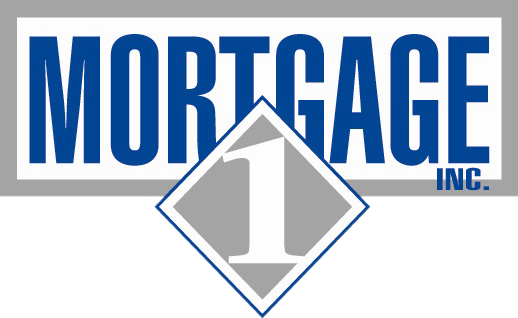
Mortgage 1 Grand Rapids: The Best Mortgage Lender in One of America’s Best Cities
August 21, 2020
Common Questions First-Time Buyers Ask About a Mortgage, part 1
September 16, 2020For much of American history, home ownership was out of reach for most families. Prior to the 1930s, mortgages were limited to 50 percent of a property’s market value and the repayment schedule was spread over three to five years, with a balloon payment at the end.
With terms like that, it is no wonder only four in 10 Americans at the time owned homes.
In 1934, the modern mortgage was created by the FHA. Loans from the FHA spread payments across 30 years. In doing so, they made the cost of borrowing lower and home ownership more attainable.
Today, mortgages come in a variety of lengths and terms and, in fact, are the most common type of personal loan held by households.
One thing all mortgages have in common is they charge interest. Understanding what mortgage interest is, how it is calculated, and how it impacts your payments is critical to ensuring you get the best terms possible when you shop for a mortgage.
Shopping for a mortgage? Locate a Mortgage 1 loan officer and get started today.
Calculating Interest
Interest is what makes all forms of borrowing possible. Interest is the fee a lender charges for loaning money.
While a person might be willing to lend a family member money without charging interest, in the real world, nobody loans money, especially large amounts, without getting something in return to cover the risk. Interest protects and rewards the lender.
Mortgage interest rates can vary depending on market conditions and the borrower’s credit score. Today, mortgage rates are at historic lows, making home ownership more affordable than ever.
When repaying a loan, interest is the additional payment made on top of the principal. Principal is the original amount you borrowed.
The interest rate is expressed as an annual percentage rate. Calculating interest and the total amount owed is pretty straightforward.
For example, let’s say you borrow $5,000 at a simple interest rate of 3% for five years. You would pay a total of $750 in interest. The formula for calculating amount owed and interest is: P(1 + (R x T)) = A
- P is the principal amount. This is how much you originally borrowed.
- R is the rate of interest per year, written in decimal format (e.g., 0.03)
- T is the total time in years you’ll use to pay off the loan.
- A is how much you pay over the total life of the loan, including interest.
In this example, the total cost is calculated as follows: $5,000(1+(.03 x 5)) = $5,750. The difference between this number and the original loan amount is the amount of interest ($750).
Types of Mortgage Interest
There are two primary types of interest that are assigned to mortgages: fixed interest and variable interest.
Fixed interest
The monthly payment remains the same for the life of this loan. The interest rate is locked in and does not change. Loans have a repayment life span of 30 years; shorter lengths of 10, 15 or 20 years are also commonly available.
Variable interest
With a variable interest loan, often called ARM (“adjustable rate mortgage”), the interest rate is not locked in and monthly payment for this type of loan will change over the life of the loan. Most ARMs have a limit or cap on how much the interest rate may fluctuate, as well as how often it can be changed. When the rate goes up or down, the lender recalculates your monthly payment so that you’ll make equal payments until the next rate adjustment occurs.
What is APR?
APR stands for “annual percentage rate.” It’s a true, all-encompassing measurement of the cost of borrowing money. The APR could include fees associated with the loan. That makes the APR slightly higher than the actual base interest rate of the loan.

“When comparing loans from different lenders, it’s important to consider both the base interest rate and the APR. APR gives you a true picture of the total cost of borrowing in one easy number,” advises Mortgage 1 loan officer Tim Siwicki.
To calculate APR:
- Add the fees and the interest paid over the entire life of the loan
- Divide that by the loan amount
- Divide that by the number of days you’ll be paying back the loan
- Multiply that by 365
- Multiply again by 100
Consider this example: You borrow $5,000 at 3% over 5 years and there’s a $150 administration fee for the loan. The APR is calculated as follows.
- $150 + $750 = $900
- 900/5000 = 0.18
- (0.18/1825) x 365 = 0.042
- .042 x 100 = 4.2
The APR for this loan is 4.2%.
The Amortization Schedule
Mortgage payments are made on a monthly basis. Each month, you pay back a portion of the principal plus the interest accrued for the month. Your monthly payment remains the same for the life of the loan.
The lender will provide you with an Amortization Schedule that lists how much principal and how much interest you are paying each month. Early in the life of the loan, you will pay more interest than principal. Over time, the amount of principal paid each month increases.
For example, a $100,000 loan with a 6 percent interest rate carries a monthly mortgage payment of $599.55. For the first payment, $500 each goes toward the interest; $99.55 goes toward principal. Each month, slightly more goes toward principal; see the table below. Not until year 18 does the principal payment exceed the interest.
| Payment | Principal | Interest | Principal Balance |
| 1 | $99.55 | $500.00 | $99,900.45 |
| 12 | $105.16 | $494.39 | $98,772.00 |
| 180 | $243.09 | $356.46 | $71,048.96 |
| 360 | $597.00 | $2.99 | $0 |
The advantage of amortization is that you can slowly pay back the interest on the loan, rather than paying one huge balloon payment at the end. The downside of spreading the payments over 30 years is that you end up paying $215,838 for that original $100,000 loan.

“It can be good to make extra monthly payments, if you can afford to,” says Mason Miller, branch manager at First National Mortgage Bankers in Birmingham, Michigan. “The extra payments go directly toward the principal. This reduces your principal and moves you further along in the amortization schedule, which also reduces the amount of total interest you will pay.”
The total cost of a mortgage loan depends on the interest rate, as well as the length of the mortgage. The longer you finance for, the more you’ll pay if all other factors are the same. Consider the examples below.
- $100,000 mortgage at 3.92 interest for 30 years equals a total cost of $170,213 and a monthly payment of $473
- $100,000 mortgage at 3.92 interest for 15 years equals a total cost of $132,423 and a monthly payment of $736
Get the Best Rate
To get the best rate on your mortgage, contact a Mortgage 1 loan officer. We are experts at guiding buyers through the home buying process.





